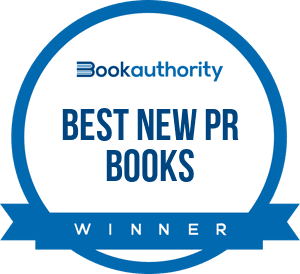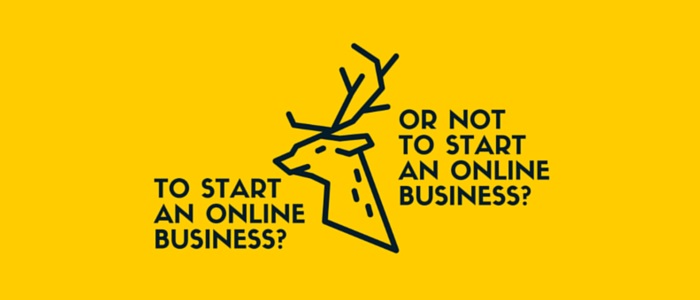
Thanks to Nikolay Chakarov from www.mengear.bg for this guest piece!
Have you ever wondered how to start your own online venture? What are the steps and how to accomplish them?
Don’t worry if you don’t know, because today I will give you a quick introduction of the basic terms and steps you need to think of when you are planning your first online business.
10 Things to Consider When Starting on Online Business:
1. Brand name
Most people are already of the common mistakes they need to avoid when choosing a brand name. These include long names, spelling mistakes, using words that are not related to their business. This simple and important task could cost you days and weeks of planning. As an entrepreneur you are well aware that time is a valuable resource and you shouldn’t overspend it on details. 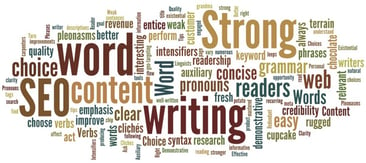 Better done than perfect – right?
Better done than perfect – right?
In order to save time and money, make a list with all of the possible and not so possible words and expressions. Then start combining them. You can do this either alone or with friends or your business partner. The last time I needed a name for our online store, we did it in 25 minutes. Remember – if at any point you decide that your current brand name somehow decreases your rate of success and sales – you can always change your business name. In fact, back in 1996 the number #1 search engine was called “Back Rub”. In 1998 the founders decided to change its name to “Google”. So why bother? Just start today!
2. Logo
There is a lot of information on the Internet regarding this topic. Most articles cover areas from choosing the right colors to the shapes orientation and size. At the very beginning of your new venture you need to focus on your product/service and look for the initial product or market fit. This is what will bring you customers.
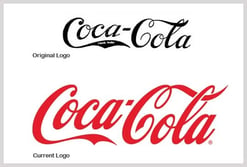
So how does the logo your product or service? That’s right – it doesn’t. Just take a sheet of paper and a pen and start drawing. Then do it on Photoshop. If you can’t on your own, ask a friend to do this for you.
In my experience, the important thing here is to find an inexpensive solution or even a free one, brief the designer properly and focus your major investments somewhere else. If you have enough money, great, you can pay someone, but remember – Coca-Cola’s logo was made for the cost of 0$ and is indisputably one of the most successful brands in the world.
3. Domain name
What matters when choosing the domain name is whether you are going to be selling products/services locally or globally. If your business is going to operate on a larger market, then you may consider buying a top level domain like .com, .net or .org. However, if you want quick local success, marketing experts advise that you should first dominate the initial smaller market, then scale to others. So as you can see, with our online venture we preferred buying a local domain mengear.bg (for Bulgaria). This plays a significant role in search results, so if you are planning to focus on a specific market/country, then make sure you please Google with the respective domain name.
4. Hosting
Next to domain name hosting is also key, because you have store your future site’s content somewhere. As the hosting options are somewhat overwhelming, here’s my advice what you should consider. If your target group is in the USA and your hosting provider in Germany for example, every time, for every single click a signal will travel through multiple providers (Verizon, AT&T, T-Mobile) to your hosting and then back to display you the requested page. As you can imagine there are dozens of devices and connections which could fail to transmit your data or slow it down. The solution is simple – buy hosting where your customers are going to be. But how much should you spend for it? Again – not much, you are just starting out. Buy the least heavy-investment plan now and if you need more bandwidth, connections or space, your hosting provider will be happy to upgrade your account when you achieve that growth.
5. Website
Responsive, mobile, bright, functionality, menus and submenus... At first glance, it looks a bit confusing. There are few important things to know here. Make sure your site is functional and easy to use. As a new start-up, there are different methods to accomplishing this, however my recommendation is to choose a well-known platform and then buy a template for it. For my previous online store I used Prestashop 1.5, but now we are using WordPress with WooComerce plugin. The site was up and running just 14 days after picking the name. Common mistake is building a big complicated site, which could lead to months of work. Then after a few months the initial idea has already changed and you may need a new different look. Thus, your project goes to a dead end before it even starts. So, make sure you have a good-looking (not perfect) responsive site by the end of day 30.
6. Marketing strategy
Basically you can still divide marketing into two major groups: inbound and outbound. The fundamental difference between these two is that with outbound strategy you are literally buying people’s attention, whereas inbound marketing relies on people’s interest. Here's how HubSpot explains it:
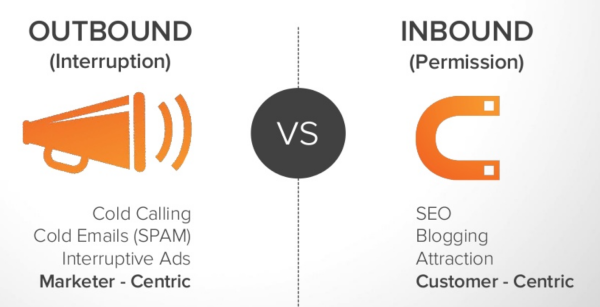
So as you can see, in the 21st century it is inbound that makes more business sense because it’s relevant. It includes blogging and guest blogging (like this post), social media posts, generation of SEO-optimized content (including text, pictures and video), newsletters and podcasts. All these should be done on a regular basis as they will multiply and lead to great brand success in the long run. This means you need a solid marketing plan and strategy in the very beginning. Inbound marketing involves a lot of hard work to attract your first audience, but once you are settled into it, you will have the critical mass to grow fast. Below we discuss in more detail some of the crucial activities of the inbound marketing methodology.
6. Search Engine Optimization (SEO)
SEO is part of the inbound marketing methodology, but plays a big role for your start-up and there are some important things to consider. If you do good SEO you are going to be visible in people’s search requests (mostly in Google), you are going to be found and beat the competition for specific phrases or keywords about your products in order to sell more.
Let’s take for example our business again. We are selling goods, gadgets and gifts mostly for men. We are optimizing our site for the Bulgarian equivalent of “gifts for men”, but this keyword will not really enhance our conversion rate. So why are we optimizing our site for it? Well, because it has around 3,000 searches per month (locally) and will get us brand awareness. People will know that we exist, we are there and they find our site so they could buy either a gift or something for themselves. That’s the start. And then how do we plan to increase our conversion rate (and then sales)? Well, we are optimizing every product for a specific keyword or preferably for a whole phrase. Long-tail keywords are always the better choice than general, informational searches, as they help increase your conversion rate. All you need to do is optimizing for transactional searches. The product “Star Wars Coffee Mug” could be optimized per keyword “Star Wars”, “Coffee”, “Mug”, “Coffee Mug”, “Ceramic Mug” or “Star Wars Mug”. Here is a screenshot from Google’s Keyword planner.

As you can see “Star Wars”, “Coffee” and “Mug” are most searched. However, these keywords are not transactional, they are rather informational. Wouldn’t you prefer to improve your organic position in Google for people looking exactly for that product, people willing to buy a “Star Wars Coffee Mug”?
Final thing here, don’t forget Google’s latest updates and make sure you optimize your site for mobile or use responsive design.
8. Blogging and content promotion
What does your target group like? What are their challenges and pain points? What are you good at and how do you solve these? It is crucial to know your audience in order to create the right content and blog posts. Otherwise no one will find them and no one read them, and so no one will find you and buy from you.
As I mentioned above – start small. Your initial target group should be niche. Start with demographics. For example men, age 25-34, $2,000+income, not married, lives in urban areas, likes sport, going out and having fun with friends. Be as specific as possible. Before you launch your site and look at statistics Google Analytics you can only guess. But that’s a start. It takes up to four weeks to get some real data and see if men or women are interested in your products, where they live, how old they are, what devices they use, what keywords they are using, how they find your site etc. Why is this important? Think about it: do you use the same words to describe a situation as your grandmother does? Probably not. You have to be flexible in your blog posts and write for the current public – using their vocabulary. This will make your pieces relevant to them and connect them psychologically to your business. You will be able to solve their problems and they will be friendlier and more open to your proposals or offers.
As you are busy launching your new business, you don’t have to write lengthy blog posts. As a general rule 400 – 500 words are the minimum length for a blog post. What matters most is that you regularly publish fresh content on your site. Google will then crawl it much more often and this will improve your search authority and rankings. Something start-ups forget is that your content needs to be promoted. Even if you do good SEO and do some PPC ads, you still have to push your blog posts out there to drive traffic and get found by people. Social media netwosk such as Facebook, Twitter, Google+, YouTube, Pinterest, LinkedIn are the perfect avenues. For example, Facebook and Twitter will help you with brand awareness and audience engagement, Google+ will improve your rankings, but only if you post regularly. Social media takes time and it is difficult to manage all platforms at the same time, but that’s why I recommend for you to use management tools such as Buffer, Hootsuite or HubSpot.
9. PPC ads
With outbound, you directly think about offline forms of advertisement – local newspapers, leaflets, radio and TV. But with inbound and online marketing it is more about banners, pay-per-click ads (PPC) or native advertising (e.g. sponsored posts on Facebook). As a start-up you might want to avoid offline methods as they are generally very, very expensive and it is difficult to measure results. For quick wins PPC ads are helpful in the beginning to generate traffic and promote your content. We are using Google Adwords. Best thing is that Google are providing us with multiple useful reports about performance and results – how many people have clicked on our advertisements, how many have actually purchased goods etc. If you want to get started with this, don’t forget to check out the basics first and to ask for a discount voucher for your new site (you only get one voucher per domain). That’s a little trick that will give you a small amount of extra money to spend on advertising.
10. Metrics
After the initial hard work is done, you’ve experimented with blogging, SEO, promotion, it is time to analyze activities and results. Ask yourself some questions: “How are we doing? Are we bellow or over our expectations?” You don’t know what to expect? Okay, refer to the table bellow, it will give you quick view where you should be:

There are many metrics including visits, conversation rate, sales, time of purchasing, pricing. You need to figure out which are most relevant for your business.
As an online store our most important metric is the amount of sales. This tells us how our site is performing in terms of how much of the traffic turns into conversions, or sold products. The formula to calculate your conversion rate (CR) is simple: just divide the total number of sales for a period by the total number of visits for the same period (so CR = Conversions/Visits). At the beginning focus on converting your existing traffic (CR at least 0.75%) to make sure your site is actually attracting any sales and then you can start thinking of boosting visits.
Conclusion
Now that I’ve given you a few initial hints how to start your own business, you can start digging more. There are plenty of articles, trainings and materials in the Internet. Once you know the answers, guess what? The questions will change. So you will have to start learning over and over again. Running a business is like learning – it’s a non-stop process. It is only a sprint just before starting and then it becomes a marathon run. And no matter how many books or articles you’ve read and trainings you’ve done, it only counts when you actually start. Apply that knowledge and find your solutions. So stop reading! Start your own online business now! Are you ready?


